AdvancedMD surveyed private practices on their top priorities and discovered many healthcare providers have big plans for the year ahead.

In our most recent survey, we asked healthcare providers and their staff about their most important priorities this year. The findings offer deep insights into the challenges they face and the issues that are top of mind within the ambulatory care space. For example, a whopping 67% said they plan to hire new staff, with most looking to bring on a new physician or provider.
The fact that 44% percent of survey respondents told us they plan to renegotiate reimbursement rates—while 35% plan to add new healthcare services to their offerings—indicates a focus on the practice’s financial health.
One of the more eye-opening findings: more than 40% of survey respondents report that their practices either have wellness benefits and mental health resources in place for employees or plan to add them. As healthcare recruiting efforts become even more competitive, such programs offer a major advantage for practices that plan to hire and retain high-quality talent.
AdvancedMD Survey: Top Priorities for Private Practices
1. Nearly 70% of the survey respondents said that they are planning to hire more staff this year.
Among the 67% of practices increasing headcounts, 29% report they plan to add, at least, one new physician or provider and another 18% say they are increasing their nursing staff. Twenty percent have plans to add admin employees.
Hiring trends are strong for healthcare providers and admin staff looking for career opportunities, but this outlook could prove difficult for the medical group owners planning to add more staff. Last year, Physicians Practice reported that hiring and retention was a top challenge for private practices, topped only by administrative burdens.

2. Only 22% of the private practices we surveyed plan to introduce new wellness benefits and mental health resources for staff.
While 22% of the survey respondents said they are looking to introduce new wellness benefits and mental health resources for staff, another 22% report already have such programs in place. Unfortunately, more than half of the respondents do not have plans to invest in wellness or mental health resources.
With burnout continuing to impact clinical staff and admin employees alike, wellness benefits and mental health resources not only help reduce work-related stress, but also can greatly improve a practice’s hiring and retention efforts.
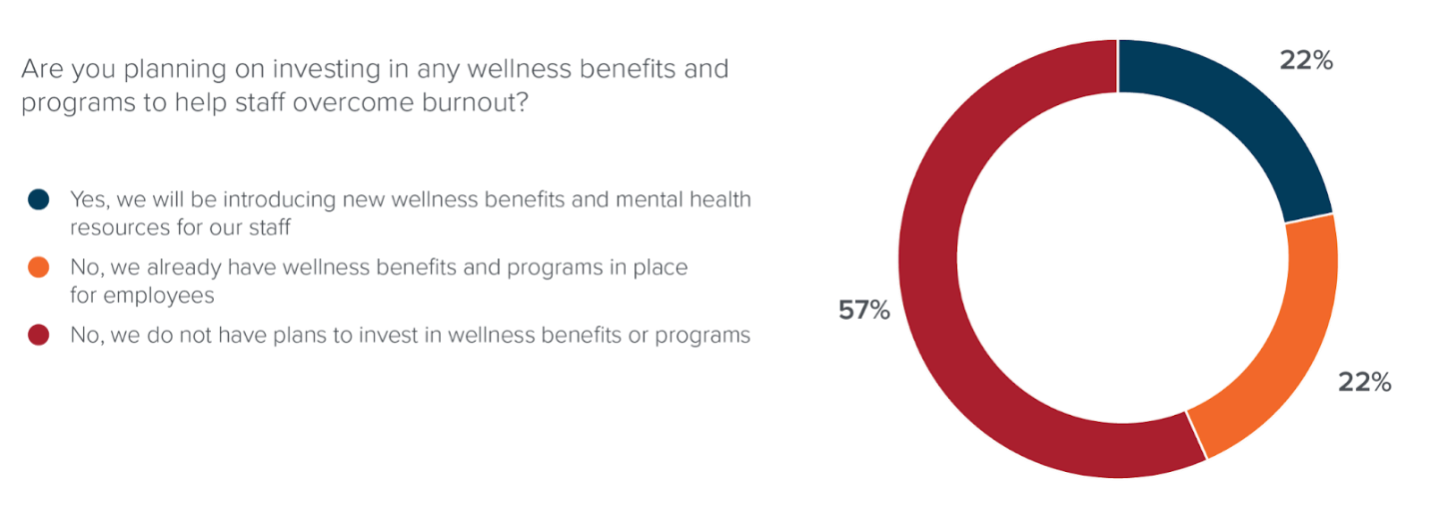
3. More than 20% of the private practices we surveyed plan to add new ancillary care services this year and another 13% are looking to add behavioral health.
For practices looking to grow their business and drive revenue gains, adding new healthcare service options can have a major impact on their annual goals. It can also significantly improve patient satisfaction and outcomes by delivering a more holistic healthcare experience.
As behavioral health grows in popularity and becomes more integrated into care, many physician-owned primary care practices are seeking to bring on behavioral healthcare providers who can work in tandem with other providers on staff to bridge the gap between their patients’ physical health and mental healthcare needs.
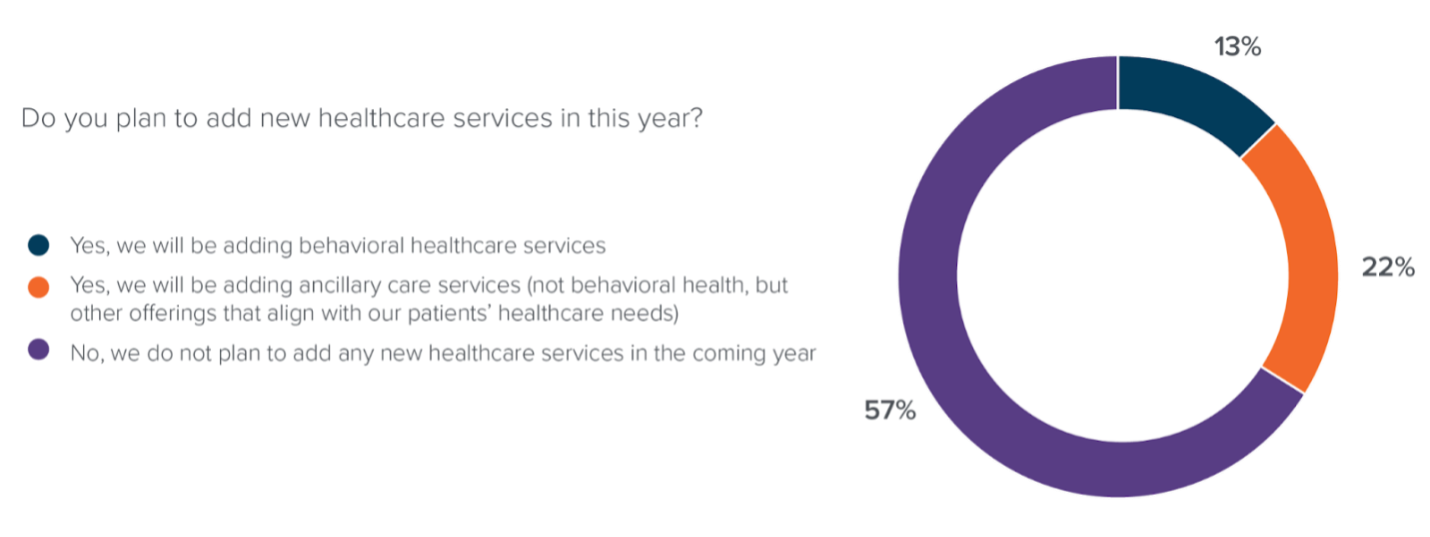
4. Interestingly, 44% of survey respondents said they plan to renegotiate payor reimbursement rates.
While adding new healthcare services can help set a practice apart from its competition and drive more business, renegotiating payor rates can have a major impact on the bottom line. “Getting even a 2% to 3% increase from a payer that is heavily represented in your practice might result in $500,000 in additional revenue during the year,” according to Tracy Watrous, vice president of member services at Medical Group Management Association (MGMA).
Watrous says that “persistence is key” for practices looking to renegotiate rates with payers: “Practices need to be prepared to reach out to these payers multiple, multiple times in order to actually get a contract negotiated.”
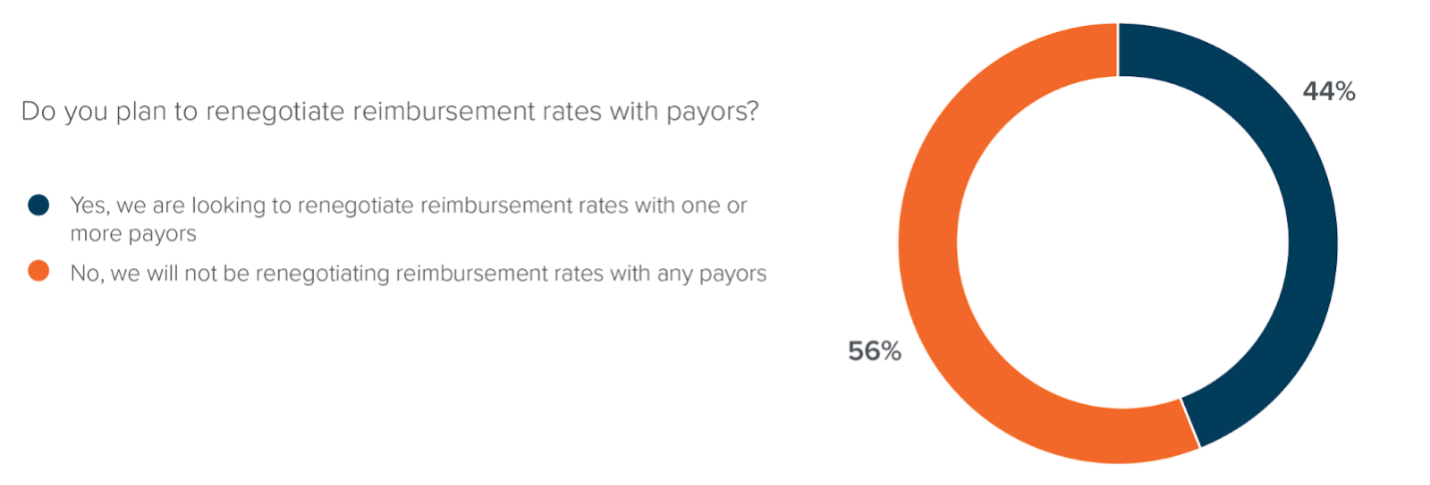
5. Less than 40% of survey respondents plan to add new patient payment options, while nearly 20% already have CCOF, digital wallet payments and payment plans in place.
Only 11% of survey respondents plan to add digital wallet payment options, while another 28% said they were adding either credit card on file (CCOF) payments or payment plan options. Less than 20% of respondents are already offering these payment capabilities. The findings indicate a concerning trend, with 42% of survey respondents not planning to add any new patient payment options.
The reality is that giving patients multiple ways to pay their medical bills can greatly increase patient satisfaction, while also helping private practices collect bill payments. A recent patient survey from PYMNTS revealed that 77% said that being able to make and receive digital medical payments would positively affect their relationship with their healthcare provider. Unfortunately, many smaller to mid-sized private practices have been slow to adopt digital wallet options or payment plans that offer more flexibility for patients.
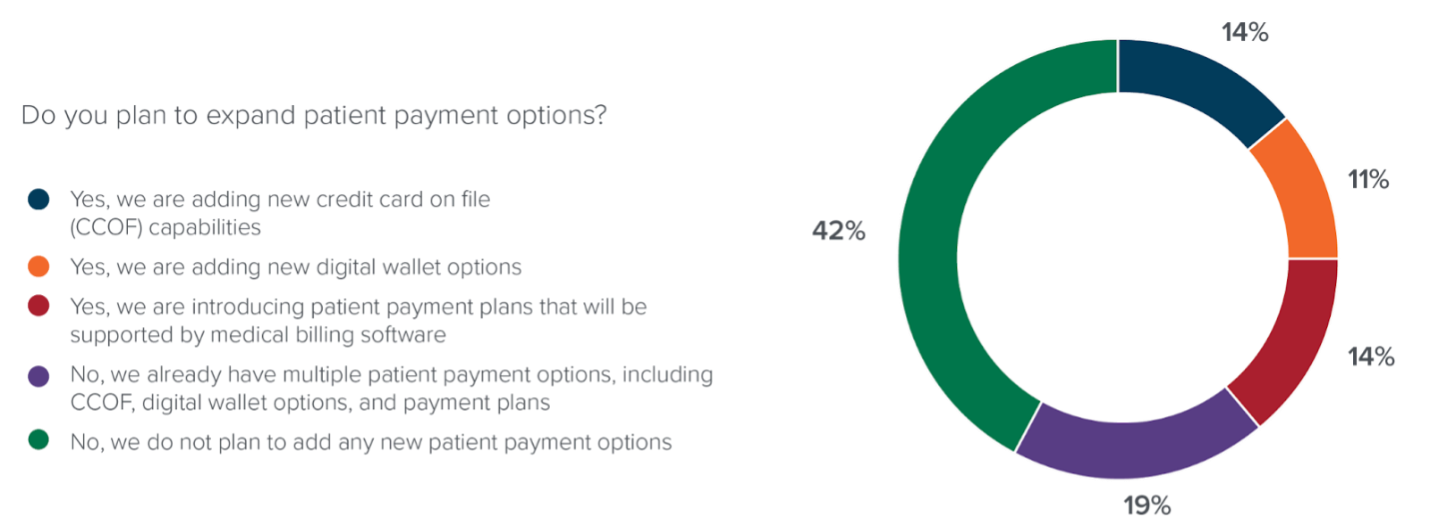
6. A significant majority of survey respondents report that their technology budget will remain the same as last year.
While 88% of survey respondents say they are either keeping their technology budget the same (65%) or increasing their tech budget (23%), 12% report they are decreasing what they spend on technology.
Researching, evaluating, and implementing new healthcare technology can be an overwhelming task, especially for small to mid-sized private practices. A recent report from MGMA found that 51% of medical group owners do not have clear processes to assess and select new technologies.
For the practices that plan to add new technologies or replace existing platforms, MGMA emphasizes the importance of having a plan in place before beginning to evaluate technology solutions: “A clear plan helps align chosen tools with organizational goals, ensures that staff and patients benefit and sets a solid foundation for ongoing digital growth and innovation.”
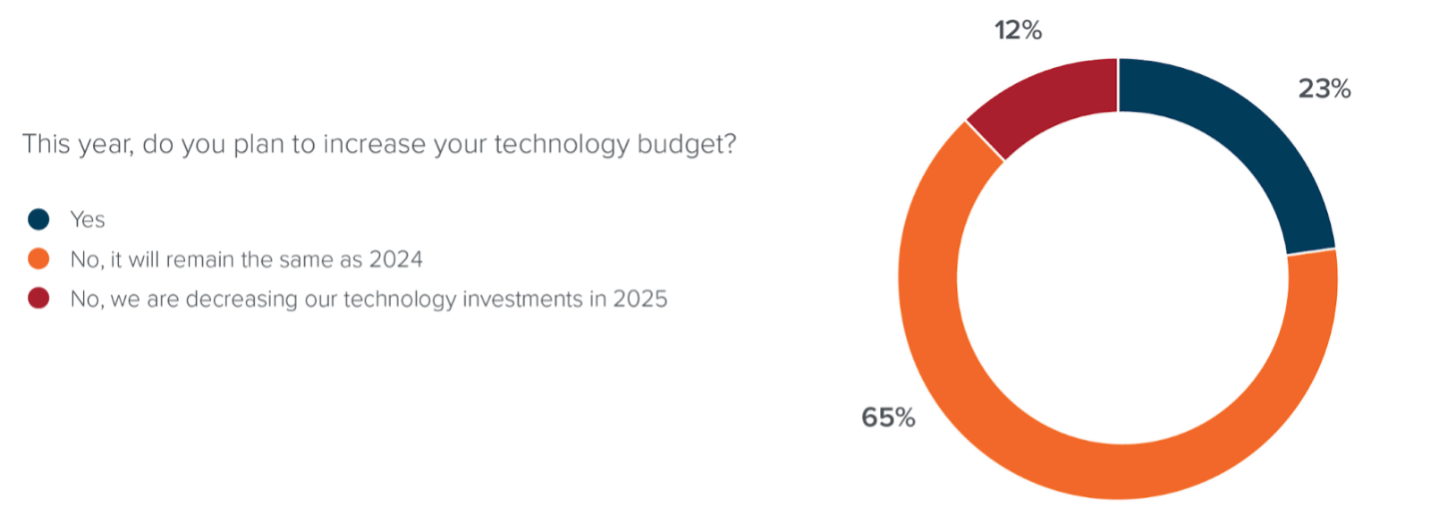
7. One-third of survey respondents said they hope to spend less time on administrative tasks within their EHR.
When asked what they hope to spend less time on this year, there was a nearly even split between the respondents who want to spend less time answering emails and those who want to spend less time on operational tasks. More than a quarter of respondents hope to reduce the amount of time spent managing claims and payor relationships.
Unsurprisingly, the most popular response was spending less time on administrative tasks within their EHR—a responsibility that has been tied to burnout among healthcare providers and admin staff in the past. Last year, Healthcare Dive revealed that nearly one-third of nurses who reported experiencing symptoms of burnout cited their practice’s EHRs as a contributing factor.
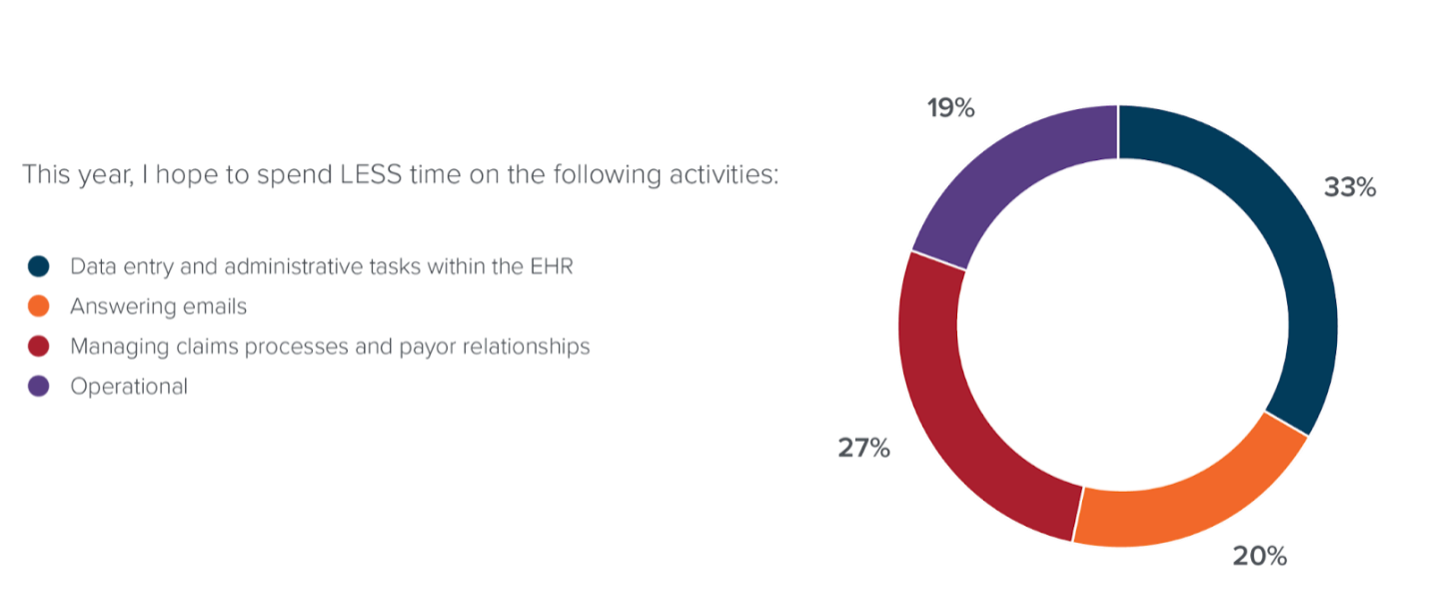
8. Nearly 70% of survey respondents hope to spend more time meeting with patients and providing care this year.
When asked what activities they hope to devote more time to this year, survey respondents overwhelmingly said meeting with patients and providing care, followed by educational opportunities and training related to healthcare services. The least popular response was spending more time on educational opportunities and training related to business strategies. Healthcare conferences, networking opportunities, and employee events all garnered, at least, a 40% response rate.
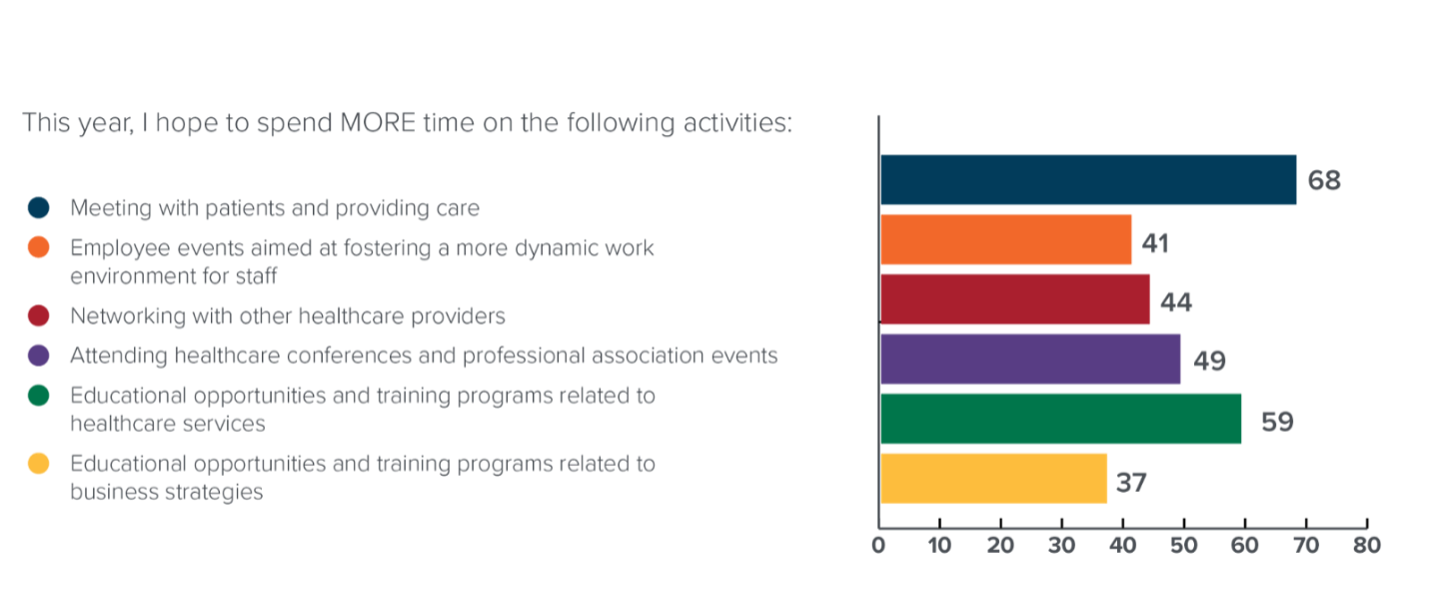
9. The top three “high-priority” issues for survey respondents: Improving patient payments and payor reimbursement processes, automating claims preparation processes, and spending more time learning current healthcare technology capabilities.
While a large majority of survey respondents report that technology budgets will remain the same this year, that doesn’t mean that technology-related issues are not a top priority. Survey findings show that private practices are keen to improve a number of their tech-enabled processes, especially when it comes to automating claims submissions, patient payments, and reimbursements.
Chief among the “high priority” issues survey respondents hope to improve this year: learning more about their current technology solutions and capabilities to ensure that they are taking full advantage of existing platforms.
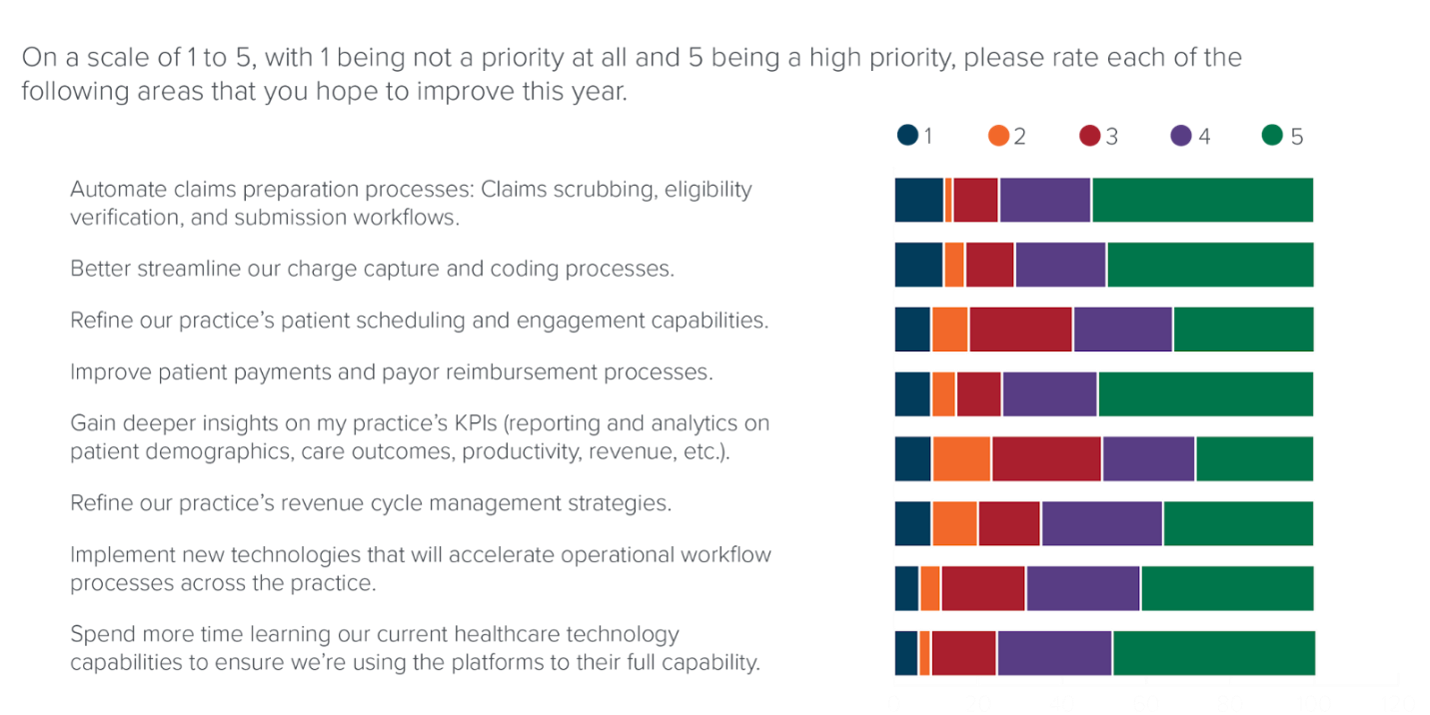
If any of these priorities align with your practice’s 2025 goals, AdvancedMD has a number of resources that can help get you to where you want to go. For practices that are just getting started, we have a series of beginners guides that you can download for free:
- Medical Billing for Private Practices: A Beginner’s Guide
- EHR for the Private Practice : A Beginner’s Guide
- Patient Engagement for Private Practices: Beginner’s Guide
Survey Methodology
AdvancedMD conducted an online survey between December 2024 and January 2025. Survey responses totaled 118 results.

